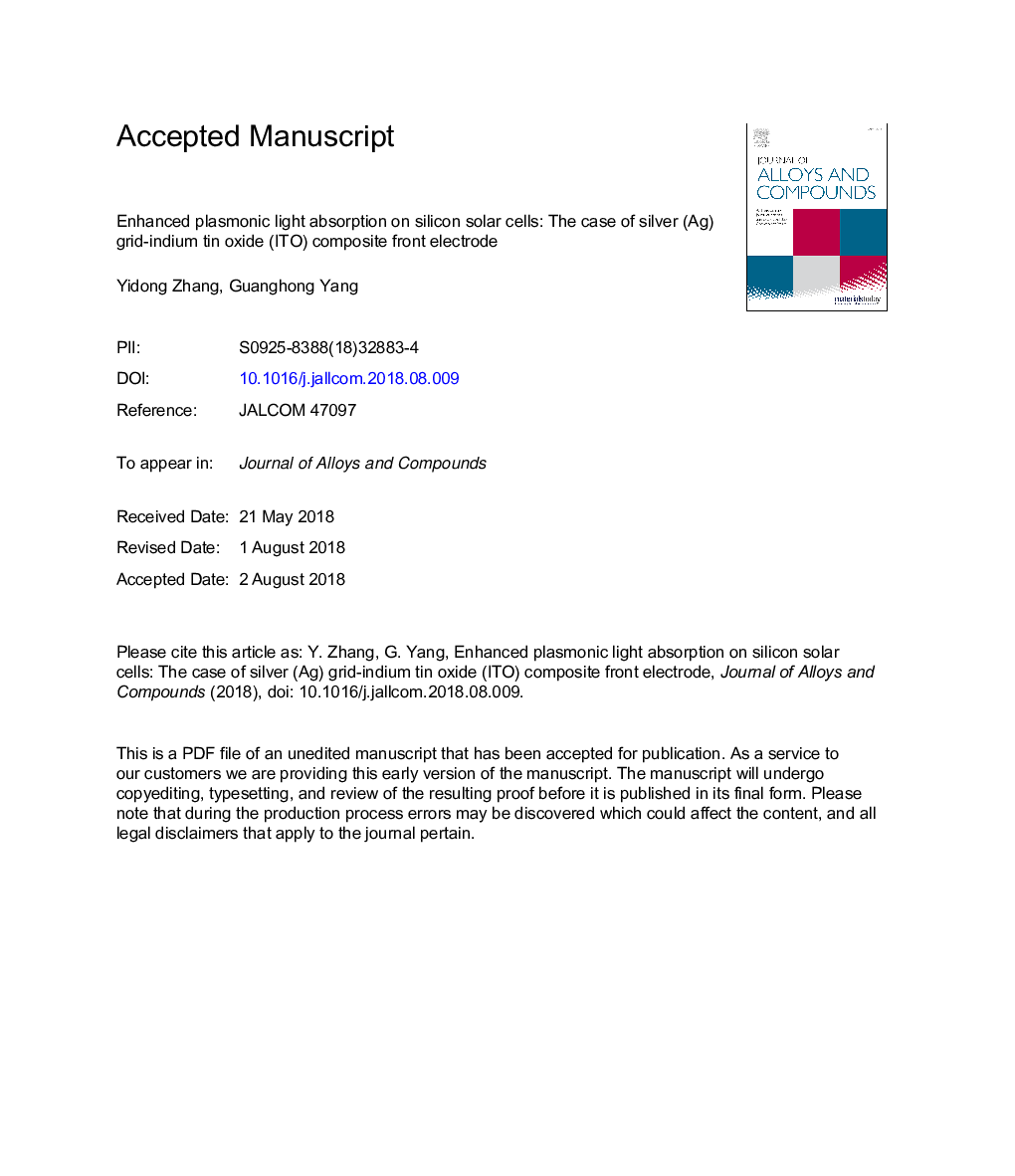| Article ID | Journal | Published Year | Pages | File Type |
|---|---|---|---|---|
| 7990018 | Journal of Alloys and Compounds | 2018 | 16 Pages |
Abstract
A novel silver (Ag) crossing grid-ITO composite front electrode with plasmonic light absorption enhancement has been designed to resolve the problem of inadequate light absorption in ultrathin film crystal silicon (c-Si) solar cells (SCs). In this novel structure, the ultrathin ITO layer primarily collects charge and the Ag crossing grids work as a charge transportation path and an optical absorption enhancer. The defined absorption enhancement factor G and structural parameters, such as ITO film thickness and linewidth, height and period of the Ag grid, were systematically optimized using finite-difference time-domain (FDTD) stimulations, and absorption enhancements were analyzed. A 61% light absorption enhancement was observed for the c-Si solar cell with an Ag crossing grid in the composite front electrode compared to that without the Ag crossing grid. Four types of resonance modes such as Fabry-Perot (FP) modes, waveguide modes, localized surface plasmon resonances (LSPR) and surface plasmon polaritons (SPPs) are supported by the designed structure. FP modes may be excited in bare c-Si SCs, but the inclusion of the 2D Ag crossing grid introduces waveguide modes sandwiched by Ag grids and the Ag back electrode, and SPPs and LSPR modes that lead to enhanced light absorption.
Related Topics
Physical Sciences and Engineering
Materials Science
Metals and Alloys
Authors
Yidong Zhang, Guanghong Yang,
